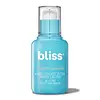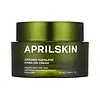What's inside
What's inside
 Key Ingredients
Key Ingredients

 Benefits
Benefits

 Ingredients Side-by-side
Ingredients Side-by-side

Water
Skin ConditioningPropanediol
SolventGlycerin
HumectantSodium Hyaluronate
HumectantSodium Hyaluronate Crosspolymer
HumectantHydrolyzed Sodium Hyaluronate
Skin ConditioningSodium Acetylated Hyaluronate
HumectantPanthenol
Skin ConditioningArginine
MaskingSerine
MaskingAlanine
MaskingGlycine
BufferingThreonine
Proline
Skin ConditioningLysine Hcl
Skin ConditioningGlutamic Acid
HumectantPCA
HumectantSodium PCA
HumectantChamomilla Recutita Flower Extract
MaskingSaccharide Isomerate
HumectantSodium Lactate
BufferingPolyacrylate Crosspolymer-6
Emulsion StabilisingHydroxyethyl Acrylate/Sodium Acryloyldimethyl Taurate Copolymer
Emulsion StabilisingPolyglyceryl-10 Caprylate
EmulsifyingSorbitan Isostearate
EmulsifyingPolysorbate 60
EmulsifyingBetaine
HumectantPentylene Glycol
Skin ConditioningSodium Citrate
BufferingSodium Phytate
Tetrasodium Glutamate Diacetate
Phenoxyethanol
PreservativeEthylhexylglycerin
Skin ConditioningCitric Acid
BufferingSodium Hydroxide
BufferingWater, Propanediol, Glycerin, Sodium Hyaluronate, Sodium Hyaluronate Crosspolymer, Hydrolyzed Sodium Hyaluronate, Sodium Acetylated Hyaluronate, Panthenol, Arginine, Serine, Alanine, Glycine, Threonine, Proline, Lysine Hcl, Glutamic Acid, PCA, Sodium PCA, Chamomilla Recutita Flower Extract, Saccharide Isomerate, Sodium Lactate, Polyacrylate Crosspolymer-6, Hydroxyethyl Acrylate/Sodium Acryloyldimethyl Taurate Copolymer, Polyglyceryl-10 Caprylate, Sorbitan Isostearate, Polysorbate 60, Betaine, Pentylene Glycol, Sodium Citrate, Sodium Phytate, Tetrasodium Glutamate Diacetate, Phenoxyethanol, Ethylhexylglycerin, Citric Acid, Sodium Hydroxide
Artemisia Vulgaris Extract 80%
Skin ConditioningWater
Skin ConditioningSqualane 3%
EmollientMethylpropanediol
SolventGlycerin
Humectant1,2-Hexanediol
Skin ConditioningCoco-Caprylate/Caprate
EmollientSaccharide Hydrolysate
HumectantCetearyl Olivate
Ammonium Acryloyldimethyltaurate/Vp Copolymer
Niacinamide
SmoothingSorbitan Olivate
EmulsifyingButylene Glycol
HumectantTrehalose
HumectantEthylhexylglycerin
Skin ConditioningDipotassium Glycyrrhizate
HumectantAllantoin
Skin ConditioningOryza Sativa Bran Extract
Skin ConditioningCarbomer
Emulsion StabilisingXanthan Gum
EmulsifyingFructooligosaccharides
HumectantTromethamine
BufferingAdenosine
Skin ConditioningPullulan
Saccharum Officinarum Extract
MoisturisingSodium Hyaluronate
HumectantIndigofera Tinctoria Extract
MaskingHyaluronic Acid
HumectantMoringa Oleifera Seed Oil
EmollientSodium Hyaluronate Crosspolymer
HumectantHydrolyzed Sodium Hyaluronate
Skin ConditioningHydrolyzed Hyaluronic Acid
HumectantHemerocallis Fulva Flower Extract
Skin ConditioningCeramide NP
Skin ConditioningMyosotis Sylvatica Flower/Leaf/Stem Extract
Skin ConditioningPhytosphingosine
Skin ConditioningSodium Acetylated Hyaluronate
HumectantHydroxypropyltrimonium Hyaluronate
Hydrogenated Lecithin
EmulsifyingCI 75810
Cosmetic ColorantArtemisia Vulgaris Extract 80%, Water, Squalane 3%, Methylpropanediol, Glycerin, 1,2-Hexanediol, Coco-Caprylate/Caprate, Saccharide Hydrolysate, Cetearyl Olivate, Ammonium Acryloyldimethyltaurate/Vp Copolymer, Niacinamide, Sorbitan Olivate, Butylene Glycol, Trehalose, Ethylhexylglycerin, Dipotassium Glycyrrhizate, Allantoin, Oryza Sativa Bran Extract, Carbomer, Xanthan Gum, Fructooligosaccharides, Tromethamine, Adenosine, Pullulan, Saccharum Officinarum Extract, Sodium Hyaluronate, Indigofera Tinctoria Extract, Hyaluronic Acid, Moringa Oleifera Seed Oil, Sodium Hyaluronate Crosspolymer, Hydrolyzed Sodium Hyaluronate, Hydrolyzed Hyaluronic Acid, Hemerocallis Fulva Flower Extract, Ceramide NP, Myosotis Sylvatica Flower/Leaf/Stem Extract, Phytosphingosine, Sodium Acetylated Hyaluronate, Hydroxypropyltrimonium Hyaluronate, Hydrogenated Lecithin, CI 75810
Ingredients Explained
These ingredients are found in both products.
Ingredients higher up in an ingredient list are typically present in a larger amount.
Ethylhexylglycerin (we can't pronounce this either) is commonly used as a preservative and skin softener. It is derived from glyceryl.
You might see Ethylhexylglycerin often paired with other preservatives such as phenoxyethanol. Ethylhexylglycerin has been found to increase the effectiveness of these other preservatives.
Glycerin is already naturally found in your skin. It helps moisturize and protect your skin.
A study from 2016 found glycerin to be more effective as a humectant than AHAs and hyaluronic acid.
As a humectant, it helps the skin stay hydrated by pulling moisture to your skin. The low molecular weight of glycerin allows it to pull moisture into the deeper layers of your skin.
Hydrated skin improves your skin barrier; Your skin barrier helps protect against irritants and bacteria.
Glycerin has also been found to have antimicrobial and antiviral properties. Due to these properties, glycerin is often used in wound and burn treatments.
In cosmetics, glycerin is usually derived from plants such as soybean or palm. However, it can also be sourced from animals, such as tallow or animal fat.
This ingredient is organic, colorless, odorless, and non-toxic.
Glycerin is the name for this ingredient in American English. British English uses Glycerol/Glycerine.
Learn more about GlycerinThis ingredient is created by putting sodium hyaluronate through hydrolysis.
You might know this as 'mini' or 'ultra low-molecular weight' hyaluronic acid. The small molecule size means it is able to travel deeper in the skin.
According to studies, low molecular-weight hyaluronic acid can:
One study from 2011 found ultra-low weight HA to show pro-inflammatory properties. Another study from 2022 found it to downregulate UV-B induced inflammation.
Hydrolysis is a process of changing a molecule using water or enzymes.
This ingredient is water-soluble.
Learn more about Hydrolyzed Sodium HyaluronateSodium Acetylated Hyaluronate is a type of Hyaluronic Acid.
Hyaluronic Acids help moisturize, soothe, and protect the skin.
Read about common types of Hyaluronic Acid here:
Sodium Hyaluronate
Hydrolyzed Hyaluronic Acid
Hyaluronic Acid
Sodium Hyaluronate is hyaluronic acid's salt form. It is commonly derived from the sodium salt of hyaluronic acid.
Like hyaluronic acid, it is great at holding water and acts as a humectant. This makes it a great skin hydrating ingredient.
Sodium Hyaluronate is naturally occurring in our bodies and is mostly found in eye fluid and joints.
These are some other common types of Hyaluronic Acid:
Learn more about Sodium HyaluronateSodium Hyaluronate Crosspolymer is a type of hyaluronic acid. In fact, it is modified version of hyaluronic acid.
The structure of Sodium Hyaluronate Crosspolymer allows it to stay in the skin's top layer for a longer period of time. This allows for even more hydration and humectant action than hyaluronic acid.
These are some other common types of Hyaluronic Acid:
Learn more about Sodium Hyaluronate CrosspolymerWater. It's the most common cosmetic ingredient of all. You'll usually see it at the top of ingredient lists, meaning that it makes up the largest part of the product.
So why is it so popular? Water most often acts as a solvent - this means that it helps dissolve other ingredients into the formulation.
You'll also recognize water as that liquid we all need to stay alive. If you see this, drink a glass of water. Stay hydrated!
Learn more about Water